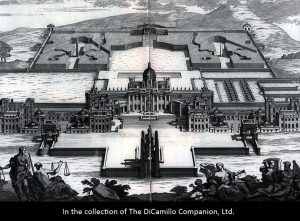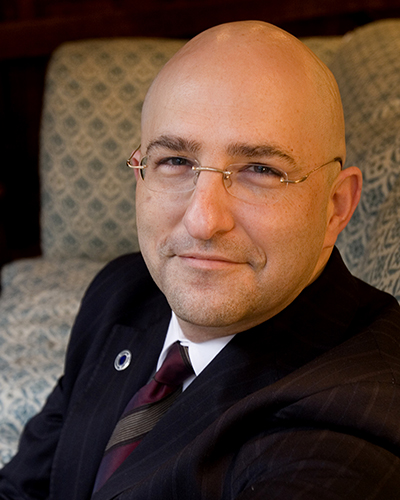 Sitting in an estate of 10,000 acres, Castle Howard is generally considered the finest private residence in Yorkshire and the first great British house of the eighteenth century. Built to the designs of Sir John Vanbrugh, one of England’s greatest architects, for Charles Howard, 3rd Earl of Carlisle, the house cost the immense sum of £78,000 (approximately £154 million in inflation-adjusted values) and is noted for its great dome, the first on a private house in Britain.
Sitting in an estate of 10,000 acres, Castle Howard is generally considered the finest private residence in Yorkshire and the first great British house of the eighteenth century. Built to the designs of Sir John Vanbrugh, one of England’s greatest architects, for Charles Howard, 3rd Earl of Carlisle, the house cost the immense sum of £78,000 (approximately £154 million in inflation-adjusted values) and is noted for its great dome, the first on a private house in Britain.
Horace Walpole, writing later in the eighteenth century on Castle Howard, probably summed up this amazing place better than anyone: “Nobody had informed me at one view I should see a palace, a town, a fortified city, temples on high places, woods worthy of being each a metropolis of the Druids, the noblest lawn in the world fenced by half the horizon, and a mausoleum that would tempt one to be buried alive; in short, I have seen gigantic places before, but never a sublime one.”
The Howards of Castle Howard, a branch of one of the most distinguished aristocratic families in England, are descended from Thomas Howard, 4th Duke of Norfolk, who was part of the Ridolfi Plot to put Mary, Queen of Scots, on the English throne and restore Catholicism in England. After the failure of the plot, Queen Elizabeth I had him executed for treason in 1572. On 20 April 1661, Charles Howard, a great-great-grandson of the 4th Duke, was created 1st Earl of Carlisle (of the third creation) by King Charles II. It is from this Charles Howard that all successive generations of the family at Castle Howard are descended. It was Charles’s grandson, Charles Howard, the 3rd Earl of Carlisle, who built Castle Howard.
"I have seen gigantic places before, but never a sublime one.” – Horace Walpole
Much of the modern British aristocracy can trace their roots to the 6th Earl of Carlisle. Through his daughter Harriet, Duchess of Sutherland, he is the ancestor of the present Dukes of Hamilton and Brandon, Argyll, Leinster, and Westminster, Marquesses of Hertford and Londonderry, Earls of Selkirk, Lichfield, and Cromartie, and the current Viscount Dilhorne, among many others.
George Howard, 9th Earl of Carlisle, was the last earl to live at Castle Howard. He was a talented artist and a friend of Lewis Carroll, William Morris, and Alfred, Lord Tennyson. He was also committed socialist who believed that his children should inherit equally, a rare concept among the British aristocracy, where the eldest male usually inherits everything. Thus, at his death in 1911, the earldom passed, by law, to his eldest son, Charles James Stanley Howard, who became the 10th Earl, while Castle Howard was left to his second son, the Hon. Geoffrey Howard. At his death in 1935, Geoffrey’s eldest son, George Howard, inherited the famous house. It was George, created Baron Howard of Henderskelfe in 1983, who saved the house after a disastrous fire during World War II and opened it to the public for the first time. George’s second son, the Hon. Nicholas Howard, runs Castle Howard today.
The Morpeth Roll is a unique document: more than 1,370 feet long and comprised of 652 pieces of paper, the roll contains the signatures of more than 160,000 people across Ireland.
One of the most important members of the family was George William Frederick Howard, 7th Earl of Carlisle, Knight of the Garter, Privy Councillor, Member of Parliament, and Viceroy of Ireland. (He was also a passionate lover of poetry who exchanged sonnets with William Wordsworth.) The 7th Earl’s most lasting legacy is the Morpeth Roll, presented to him in 1841 by the people of Ireland as a parting gift when he left his post as Chief Secretary. (He was then, as his father’s heir, Viscount Morpeth.) The Morpeth Roll is a unique document: more than 1,370 feet long and comprised of 652 pieces of paper, the roll contains the signatures of more than 160,000 people across Ireland. The Morpeth Roll is prized today because its valuable information predates the Great Famine and substitutes for Irish censuses lost during the civil war.
The eminent curator of Castle Howard, Dr. Christopher Ridgway, will speak about Castle Howard, its family, its art, and the Morpeth Roll on Thursday, 8 November, at NEHGS headquarters in Boston. You can sign-up for the lecture here.
Share this:

About Curt DiCamillo
Curt DiCamillo, internationally recognized authority on English country houses and the decorative arts, joined NEHGS in February 2016 as our first Curator of Special Collections. A longtime member of NEHGS, Curt has led highly successful heritage tours for us to England and Scotland, lectured extensively in the United States and abroad, and taught classes on British culture and art at the Museum of Fine Arts, Boston. Curt was previously Executive Director of The National Trust for Scotland Foundation USA, where he successfully raised more than $7 million and initiated many innovative programs. As Curator of Special Collections at NEHGS, Curt will provide strategic direction and expert guidance for organizing and exhibiting our extensive collection of family history-related artifacts and fine arts.View all posts by Curt DiCamillo →